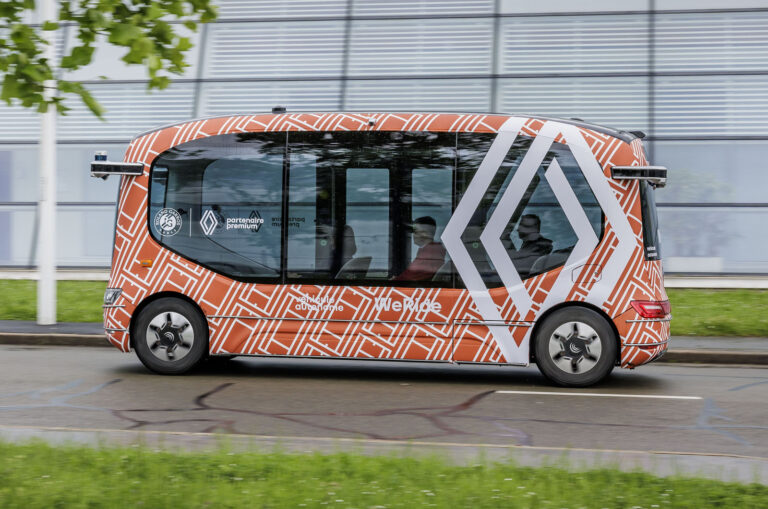Renault acknowledged that the integration of advanced autonomy would make such vehicles more expensive to develop and build than their manually operated counterparts but said these could be offset by not needing a paid driver. Rather, an entire fleet of vehicles could be supervised remotely by a much smaller workforce.
Cementing this new ambition, Renault has partnered with Sino-American technology company WeRide (in which it has already invested through the Alliance’s capital venture arm) to trial level four autonomous shuttles on public roads.
WeRide has some 700 autonomous vehicles in operation globally, clocking up a combined 17 million miles in operation.
The two firms will operate an “experimental” shuttle service using WeRide’s Robobus people mover at the French Open tennis tournament in Paris beginning later this month.
“[The] Renault Group is moving forward to implement its autonomous vehicle strategy,” said chief technology officer Gilles Le Borgne. “As a result, thanks to our experiments and our partners, the best in their fields, we will be in a position well before the end of this decade to propose a highly relevant range of autonomous, low-carbon minibuses to meet the growing needs of the regions.”
Renault’s perception that high-level autonomy doesn’t currently suit the mass-market car tallies with that of Volkswagen CEO Thomas Schäfer, who told Autocar last week: “The absolute focus points for volume brands are hands-off highway [assistance] and parking.
“The hands-off complex driving situations in the middle of London or Beijing are a different story. The expectation of customers to have that and not pay €25,000 extra for a driving stack is very limited.”


